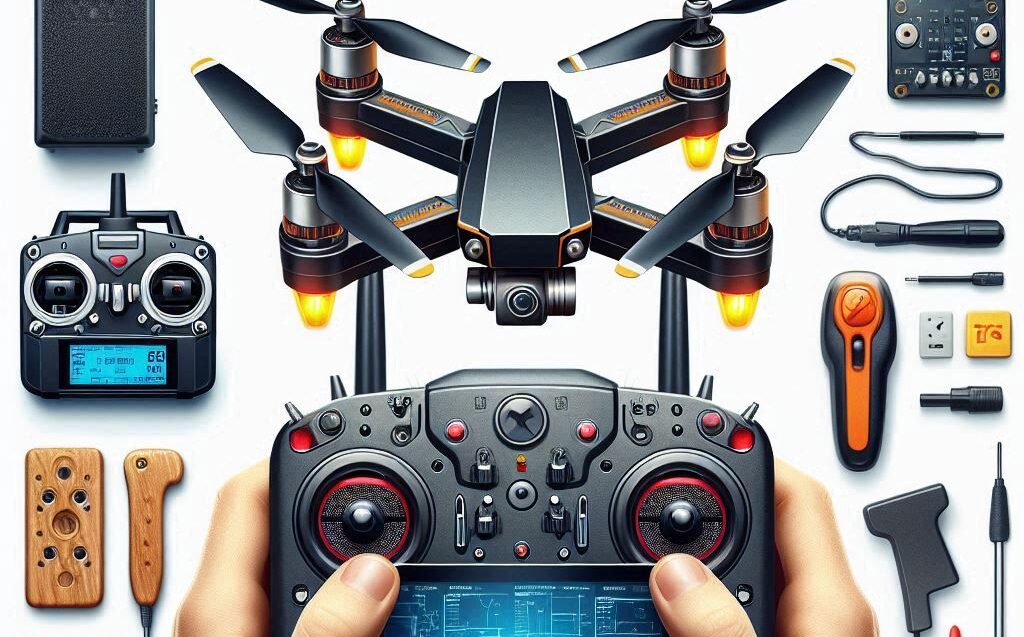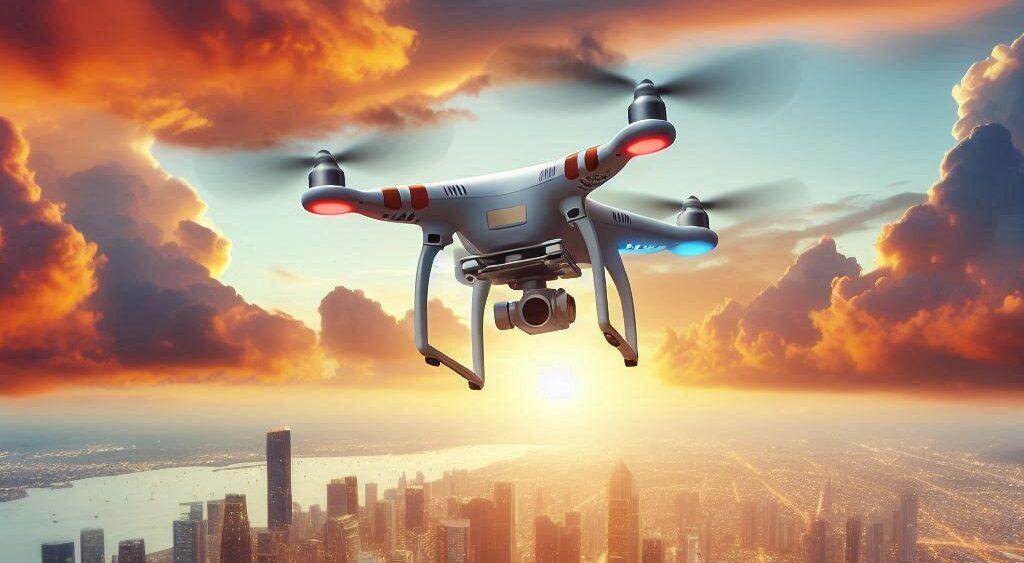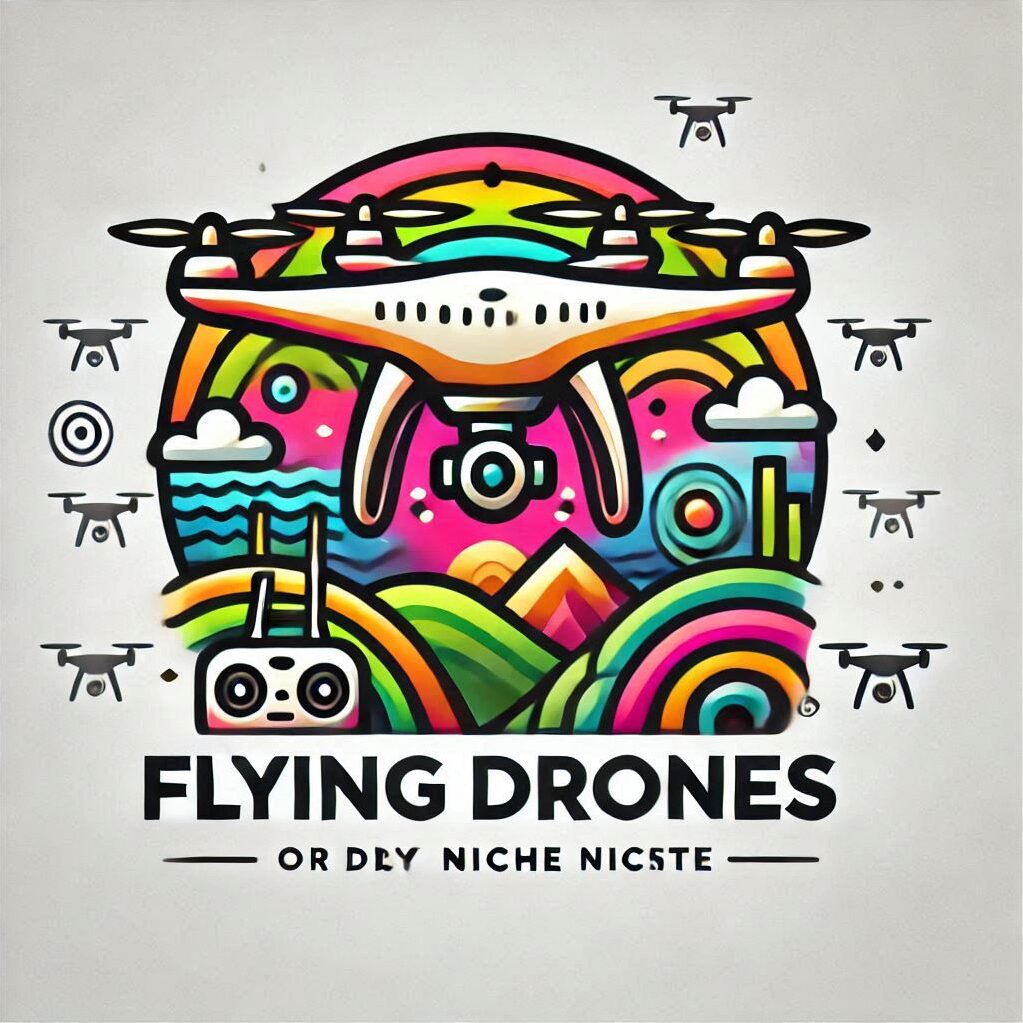So, you’re new to the world of RC drone cameras? Great choice! These nifty gadgets have changed the game both for tech enthusiasts and casual users alike. You start with the basics. RC (which stands for remote control, by the way) drones equipped with cameras are all about taking your camera adventures to the skies, quite literally. With these drones, you can capture breathtaking aerial views and snap photos from vantage points that were once unimaginable.
What makes these little flyers tick? It all boils down to their core features and components. On a typical RC drone, you’ll find a frame, motors, propellers, and, of course, a camera. They come with rechargeable batteries and a special chip that keeps them level as they soar. Some models even offer GPS tracking and automatic return features to make sure they always come back home safely, even if you lose sight of them.
Drones have become a staple in modern tech circles, not just for their functionality but also as tools for creativity. Professionals in fields like photography, filmmaking, and agriculture rely on drones for their work. For hobbyists, drones offer an exciting way to explore and capture stunning landscapes or action shots from unique angles.
It’s not just about the tech; it’s about making these devices user-friendly. Many drones today feature intuitive interfaces – think smartphone apps that sync with your drone to stream live footage or set predetermined flight paths. This makes them accessible to just about anyone with the drive to try their hand at flying.
Last but by no means least, flying a drone brings with it a fair share of responsibility. Mindful flying is key. Always be aware of local laws and regulations, respect privacy boundaries, and ensure you’re flying safely and ethically. Your fun can coexist with respect for others and the environment, so keep that in check and happy flying!
Choosing the Best RC Drone: Key Features to Consider
Picking the right RC drone with a camera can seem a bit like navigating a maze, but it doesn’t have to be complicated. Think of it as shopping for your new favorite gadget – exciting and full of possibilities. So, where do you start? Well, there are several key factors to weigh before hitting that buy button.
First up, consider what you’ll be using the drone for. Are you aiming to capture professional-quality videos, or are you just in it for some casual fun? Your purpose will guide your choices. Professional-grade drones offer high-definition cameras and enhanced stabilization features, ideal for capturing cinema-worthy footage. For hobbyists, more budget-friendly options do the trick without breaking the bank.
Size and weight might seem trivial, but they’re quite crucial. Smaller drones are super portable and suitable for indoor flights, while larger ones handle the wind better and often come with advanced features. Battery life is another biggie. Nobody wants to deal with the frustration of a drone dying mid-flight. Most drones offer between 15 to 30 minutes of airtime, so look for one that meets your adventure needs.
There’s also the brand game to consider. Some brands are well-known for their reliability and customer service – companies like DJI, Parrot, and Yuneec have a solid reputation in the drone sphere. Reviews from fellow users can provide valuable insights into real-world performance and potential quirks of different models.
And here’s a quick tip: Watch out for those common myths. Some folks think the most expensive drones are always the best, but that’s not always true. Price doesn’t always dictate quality, so do your homework and find the best drone for your particular needs. Smart shopping leads to smarter flying!
Exploring Drone Compatibility: RC Controllers and Beyond

RC controllers are like the cockpit for drone pilots. These handy devices tap into the ultimate drone experience by giving you tactile control over your flying machine. It’s the difference between tapping on a screen and feeling every pitch and yaw through a joystick in your hand. That’s where the magic lies.
Many drones in the market are designed with built-in compatibility for RC controllers. If diving into the world of tactile control is your jam, you’ll want a model that pairs seamlessly with RC gear. Look for options that offer connectivity, like spectrum or multi-protocol receivers, ensuring they talk fluently with your gear.
Why go RC instead of sticking to app-based controls? Precision and feedback. Whether it’s nailing that perfect photo angle or dodging obstacles, having a controller helps you react faster and more accurately. Plus, folks who love the feel of a joystick find it more intuitive and engaging, creating an immersive experience.
It’s not all about dedicated controllers, though. Modern drones often allow integration with other smart devices, letting your phone or tablet double as an additional control screen. Some setups even work with VR, offering a first-person view for those sought-after immersive flights.
As with anything tech-related, practice makes perfect. Spend some time getting to know how your chosen controller pairs with your drone. Test different settings and configurations to find what feels most natural for you. That way, your flying will be smooth, and your footage will be unbeatable.
The Limits of Flight: How Far Can Your RC Drone Go?

When it comes to how far an RC drone can fly, it’s all about understanding the limits and pushing them wisely. A drone’s range isn’t just a number on a box, but a combination of factors that vary from one model to the next. Most consumer drones typically offer a range between 500 meters to 8 kilometers, depending on the design and tech involved.
Several elements influence how far your drone will actually soar. The radio frequency of your controller plays a big role; higher frequencies usually support longer distances. Also, large open spaces free from interference like tall buildings or dense woods allow for better connectivity and thus extended range. Keep in mind that more advanced drones might come with additional range boosters or signal extenders.
Environment is a huge factor too. Urban areas with lots of wireless signals may disrupt your drone’s communication, cutting its travel short. Always check your surroundings. In rural or open areas with clear lines of sight, your drone will generally fly further comfortably.
Don’t forget regulations are there for safety, which means limits aren’t just technical but legal too. Always keep a keen eye on the rules about how far—and where—you’re allowed to fly. In many places, maintaining line-of-sight with your drone is a must, so never let it get too far out of your sight.
Want to stretch your drone’s distance potential? Maintaining clean equipment and ensuring your drone’s software is up to date can work wonders. Sometimes, simple fixes like adjusting the antenna or investing in a stronger transmitter can make a noticeable difference. With the right prep, you’ll be covering more sky than ever—safely, of course.
Reaching New Heights: How High Can RC Drones Fly?
Ascending to impressive heights is one of the thrills of flying RC drones, but how high can you really go? Drones vary in their altitude capabilities, with most consumer models hitting around 400 feet comfortably, aligning with global aviation regulations. This range keeps both drones and manned aircraft safely apart while still offering stunning aerial views.
Technology and design play substantial roles in determining a drone’s altitude performance. Factors like motor power, propeller efficiency, and overall aerodynamic design can impact how high you can fly. Keeping your drone light also helps it climb faster and more efficiently, maximizing available altitude.
Weather is another player in this high-flying game. Windy conditions can cap your drone’s potential height. In contrast, calm, clear days are perfect for reaching your model’s full vertical potential. Always check weather forecasts before planning any ambitious flights to avoid surprise gusts and drafts.
Even if your drone can technically reach higher altitudes, restrictions might tether you to specific heights, guided by local aviation laws. Sticking to these safety measures isn’t just about compliance but ensuring your flying fun is safe for everyone involved. Remember, responsibility keeps the skies open for future adventures.
For those eyeing high-altitude adventures, practice and preparation are your best pals. Knowing your drone’s specs and having a clear plan will help you achieve your height goals without overreaching or risking unnecessary mishaps. With the right approach, the sky’s the limit—and your drone flights can be as smooth as they are exhilarating.
Thank you very much for taking a look at my article about RC drones. Please go ahead and comment below if you have any questions about the topic, and I’ll be happy to reply. Can you also take a look at my product reviews, and click on the links so you can purchase a drone you like. Thanks and God bless.
